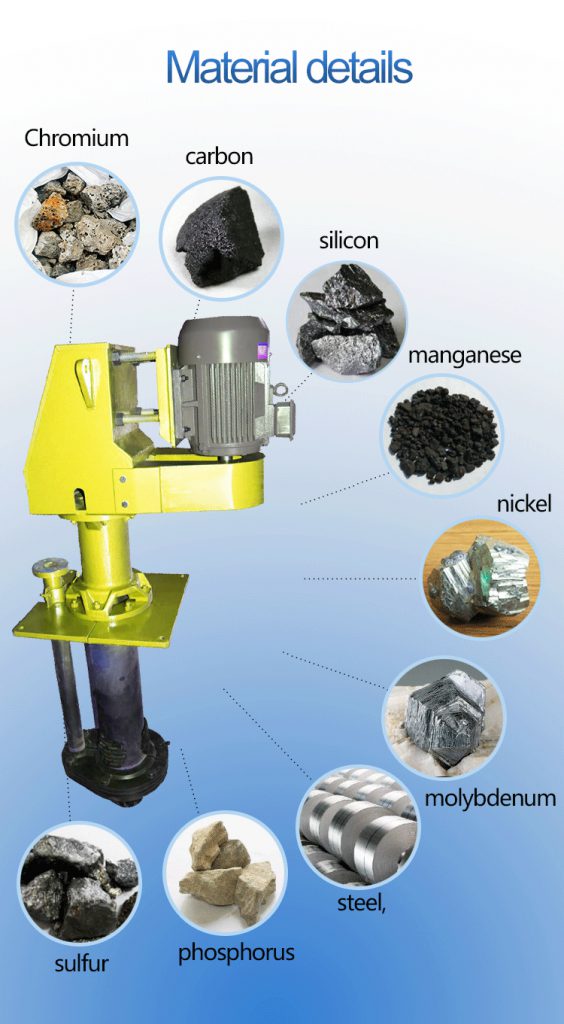Vertical Mining Pump in Gold Mining
Vertical Mining Pump in Gold Mining
Gold mining and production and development of gold ore resources have been both rapidly and continuously developing over the past 40 years. Since the 1980s, a large amount of argillaceous gold-bearing oxide ore has been discovered in China. To gain access, the development of a full mud cyanidation leaching process was developed. In 1983, one mine site built a cyanide plant that can process 500 tons of ore per day. Since then, the full mud cyanidation process has been gradually applied and popularized and has been used at gold extraction sites in Henan, Jilin, Hebei, Shaanxi, Inner Mongolia, as well as many others.
In November of 1979, the Changchun Gold Research Institute began a successful two-year experimental study in order to address the difficulty of separating densely filtered argillaceous ore from solid-liquids. They accomplished this by using the unfiltered carbon slurry gold extraction process on the ore of the Tuanjiegou gold mine. Based on these results, in August 1984, the Linghu gold mine in Henan independently designed domestic equipment to build China’s first 50-ton ore-based carbon slurry gold extraction plant, making China a leader in the gold mining industry. This extraction process has become one of the important methods for processing gold in argillaceous ore in rock gold mines.
In order to promote the application of the carbon slurry extraction method, the Gold Bureau of the Ministry of Metallurgical Industry in China collaborated with the American-owned David McGee Company operating in the Xiqiao gold mine in the Shaanxi Province and Zhangjiakou mine site in the Hebei Province in 1984, obtaining education on advanced foreign technology and equipment. They applied what they learned to establish two carbon-leaching gold plants with daily processing capacities of 250 tons (Xiqiao) and 450 tons (Zhangjiakou). According to the survey, the Zhangjiakou gold mine reached a recovery rate of 93.54% (the recovery rate of carbon slurry in 1988 was 90.25%).
China’s gold production technology levels have been greatly improved through the application of experimental research and innovations developed from those findings. For example, the Jinchangyu gold mine successfully replaced zinc mud and wire with zinc powder, causing the replacement rate to reach 99.89%. Additionally, the gold grade of gold mud has significantly improved, and zinc consumption has been reduced from 2.2kg/ton to 0.6kg /ton. Production costs have also been significantly reduced. This method has been used in Zhaoyuan, Jiaojia, Xincheng, Wulong, and other mines and garnered similarly significant results. The low-grade oxide ore heap leaching process was successfully applied in the Dandong Hushan gold mine test, and the technique was successively applied in Henan, Hebei, Liaoning, Yunnan, Hubei, Inner Mongolia, Heilongjiang, Jilin, Shaanxi, and other provinces.
According to incomplete statistics, the current annual output of gold produced by the heap leaching method in China has reached more than 22,000 tons (the cumulative gold produced by heap leaching in Henan Province is 13,000). When compared with developed countries, however, the scale of heap leaching in China is relatively small. There is also a large gap in technology regarding this method, but results appear promising. In 1988, the large-scale 10,000-ton heap leaching site of the Shuangwang Gold Mine in Taibai County, Shaanxi, was put into operation, resulting in an ore grade of 1.5g / ton.
The introduction, inclusion, and incorporation of foreign advanced technologies and equipment (including high-efficiency thickeners from the US, double-spiral agitated leaching tanks, Mars pumps from Japan, and belt filters) have further advanced China’s efforts in gold production. The improvements made have also increased efficiency, encouraged energy consumption, and allowed for larger-scale production and automation. In recent years, there have also been new developments in scientific research on new processes, such as thiourea gold extraction, thiosulfate gold extraction, pre-oxidation bacteria leaching, pressurized catalytic leaching, and resin adsorption.


